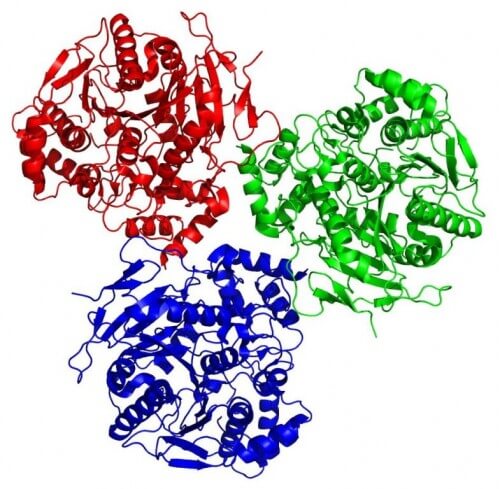Cabbage moth larvae have earned them a bad name due to their destructive eating habits, but a new study by Weizmann Institute scientists shows that it may be possible to use them as a useful and efficient factory for the production of human proteins.

The possibility of producing large quantities of human proteins, on demand, is the basis of research in the life sciences, the biotechnological industry and medicine. Today, the most accepted method for producing such proteins is their production in cell cultures: a human gene that codes for the desired protein is injected into a bacterial cell, a yeast cell or an animal cell, where it "takes over" the local protein production system, turning it into the creation of human proteins. The proteins created by this method are identical - both in their structure and function - to the proteins created in the human body.
Despite their effectiveness, these methods are very expensive, and require a long time. A new protein production method using insect larvae offers a cost-effective alternative to producing large quantities of human proteins. But are the proteins created in this system similar in their structure and activity to human proteins? Will it be possible to use them as a substitute for human proteins?
To answer this question, American researchers recently turned to Dr. Harry Greenblatt and Prof. Yoel Sussman from the Department of Structural Biology in the Faculty of Chemistry at the Weizmann Institute of Science. The two were asked to decipher the spatial structure of the human enzyme carboxyl-esterase 1, which the American researchers created using a system of insect larvae of the cabbage moth (Trichoplusia ni). The enzyme is mainly produced in the liver, and breaks down drugs there. A small change in its structure would perhaps allow it to be used to break down pesticides and even nerve gases.

Using the advanced methods of the Israeli Center for Structural Proteomics (ISPC) at the institute, which is directed by Prof. Sussman, and by combining several methods, including methods for protein synthesis, and methods for data mining, Dr. Greenblatt succeeded in creating crystals of the human enzyme carboxylesterase 1 that was isolated from the larvae , and make sure that its structure - as well as its function - are identical to those of other examples of the enzyme, which were produced using traditional methods, in cell cultures.
His findings confirm that whole insects can indeed be used as a "factory" for the production of proteins. "The moth larvae are not only easier to grow and genetically manipulate," says Dr. Greenblatt, "but also cheaper to use compared to methods based on cell cultures, and they even produce larger amounts of proteins."
Prof. Sussman: "So far we have only tested the production of the human enzyme carboxyl-esterase 1 in insects. If it turns out that the new system is effective for producing more proteins, it will serve as a valuable tool for scientists and industry alike."
More information about the study can be found atThe encyclopedia of proteins(Protopedia)


5 תגובות
I wonder at what stage the subject of koshering these unclean creatures will come up
It's just great, let live!!!
Let the Animals Live.
And what do the fans of the butterfly association say about it?
Mistreatment of thousands of butterfly larvae will surely not pass in silence.